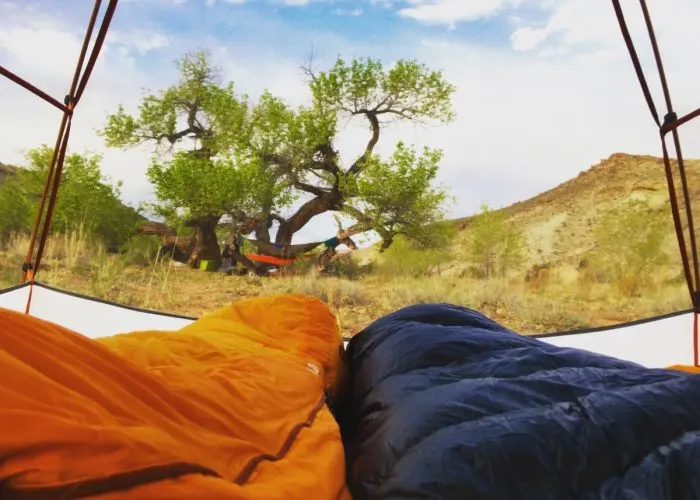
When picking a sleeping bag, you need to ask yourself these two very important questions:
- Will you be car-camping or backpacking?
- What temperature will you be using your sleeping bag?
Answering these two questions will help guide how to choose a sleeping bag. There are tons of different options for choosing a sleeping bag, but to help you narrow your search it’s best to start with the 5 main qualities: warmth, weight, comfort, brand, and cost.
If you want a sleeping bag that is amazing in all categories it’s probably going to entail a hefty price tag. Or if you want an inexpensive option you may have to sacrifice a little bit in one of the other categories.
For example a backpacker would probably prioritize weight, versus a car-camper might prioritize warmth and comfort.
First we need to break down the main aspects when choosing a sleeping bag, such as:
- Weight
- Size
- Insulation
- Temperature
- Shape
- Hood
- Brand
- Zipper
- Accessories
As I explain the options, be thinking about how each feature fits into your specific needs.
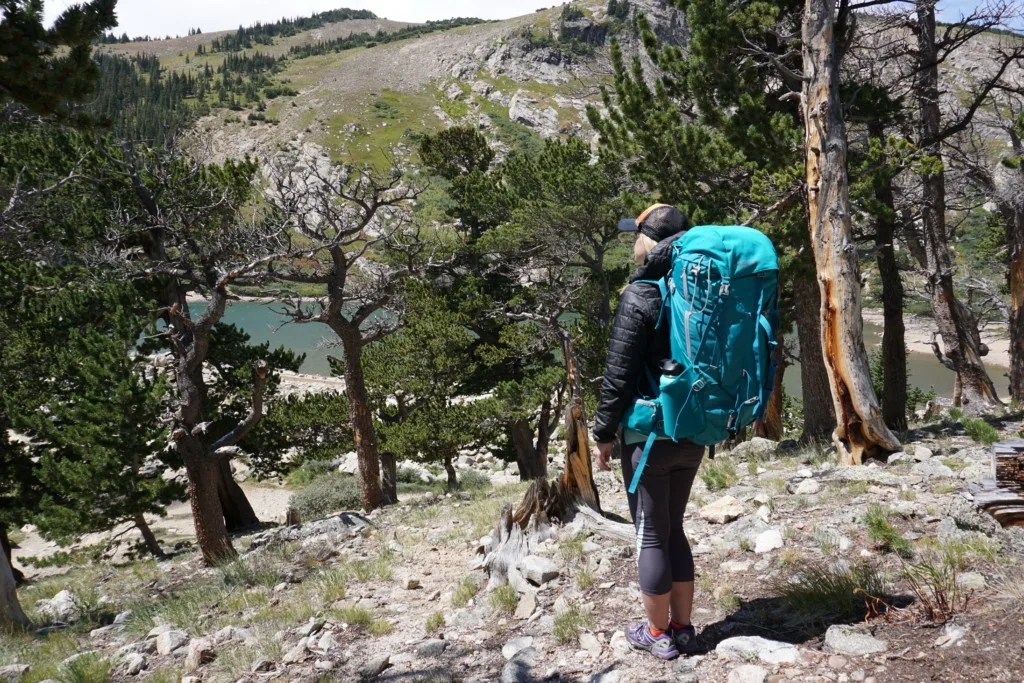
This post may contain affiliate links. Disclosure policy.
Weight of a sleeping bag:
Weight can be a huge deciding factor for how to choose a sleeping bag. If you are car-camping or RVing, weight won’t really matter, because you won’t ever have to carry the weight on your back. But for backpacking, you will be carrying your sleeping bag on your back the whole journey. Therefore, a backpacker might aim for your sleeping bag around 3 lbs or under.
Size of a sleeping bag:
Again, if choosing a sleeping bag for car-camping, size won’t really matter unless you are trying to save space in the car. But, when backpacking you will want to aim toward the stuff sack size of 7.5 x 15 inches (7 liters).
Depending on your pack size this should fit very comfortably in your backpack with plenty of extra room. If you do decide to go bigger you can always get a compression sack, which can compress your sleeping bag even smaller.
Most models of sleeping bags will come in a few different sizes, usually regular and long (or tall), or you might find gender-specific bag. Female sleeping bags often have extra insulation for the feet and/or different dimensions that accommodate wider hips. Gender-specific sleeping bags are definitely not required.
Before you purchase a bag, just make sure you check the sizing chart and investigate the various sizing options.

Insulation for a sleeping bag:
Insulation is the most important factor for how to choose a sleeping bag for me. If I am cold, I can say goodbye to getting any sleep. But, my body runs cold, so I had to make sure I got a quality insulated sleeping bag, so I could be catching zzz’s all night. (I will add my sleeping bag recommendation below)
Insulation Types
There are 3 different types of insulation for a sleeping bag. The insulation is what traps your body heat, and creates a buffer between you and the cold outside air.
Down:
Down tends to be more lightweight, warmer and compact smaller. Down is either made by duck or goose feathers.
In dry conditions down is great, if it gets wet, it can lose all function of an insulation. Sometimes if down gets wet in cold conditions, it can be worse to be in the sleeping bag than no sleeping bag at all. It can take longer than a day to dry and can ruin the feathers when wet. (Most newer down sleeping bags are treated to be water resistant.)
Since down comes from animals, companies are beginning to provide certification that their down is ethically sourced. If this is important to you, be on the look out for information about how their down is sourced,
Synthetic:
Synthetic tends to be a bit cheaper in price, doesn’t compact as small as down and doesn’t keep you as warm. Synthetic is usually made of polyester. The advantages of synthetic it is quick-drying and non allergenic. When synthetic is wet, it will still act as an insulation and keep you warm.
Hybrid:
A hybrid is a mix of both down and synthetic. This type is a little less common, but can benefit both positive attributes from each insulation. Some will blend the two insulators together and others will have synthetic on the bottom and down on the top layer.
Fill Types
The fill of a sleeping bag is the loft quality of the insulation.
Down:
Most down sleeping bags come with a fill which is either goose or duck feathers. Usually the higher the fill, the more expensive, but also means increased warmth. A 650 fill, lofts 650 cubic inches per ounce. For example an 850 fill, will be loftier and warmer than a 650 fill.
Synthetic:
Synthetic fill is usually made from polyester and doesn’t quite have the same loft factor as down fill. Synthetic fibers will break down faster from being continuously stuffed and unstuffed.
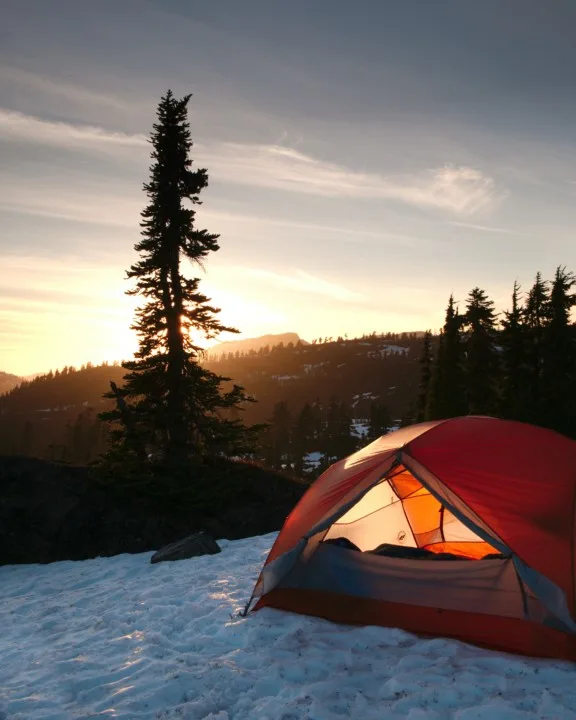
Temperature Rating for a sleeping bag:
The temperature rating on a sleeping bag is what the average person will sleep comfortably. And when choosing a sleeping bag, it will probably be the most important factor to take note of.
The most common standard is called the EN Standard, and it is designed to give you an idea how well a sleeping bag will perform. Keep in mind that the temperature ratings are for the average person wearing base layers. So if you know you sleep warmer or colder, you will want to round up or down on the rating.
In my opinion it’s best to always round down, because you can always unzip a sleeping bag if you get too warm.
Many sleeping bags are designed for 3-season meaning (spring, summer, and fall). When choosing the best temperature rating for you, think about where you plan to camp.
If you will be camping in the mountains, you will be at elevation, so the temperature will most likely drop significantly at night. If you will be camping in the desert, the temperature won’t drop quite as significantly as camping in the mountains. If you plan to camp by the ocean, you might get a wet cold from the air.
If you plan to camp in all different areas, go off the temperature rating of the coldest places you will camp, as you can always unzip a sleeping bag when warm.
Our Recommendations For Sleeping Bag Temperature Ratings
- Fall & Spring: Aim for 30° F degree bag or below
- Summer: Aim for 30° F degree or above
- Winter: 0° F degree or below
Shape of a sleeping bag:
There are a few different shapes to consider when choosing your sleeping bag.
Rectangle:
This shape will be the most roomy and comfortable. Most rectangle shapes won’t have a hood and won’t be as warm because there is more room for air flow in the bag. Rectangle style is advised more-so for a car camper, RVer, or backyard camper because it’s heavy and doesn’t compact very small.
Mummy:
This shape will be more snug because it’s designed to use less fabric and more compactable for backpacking purposes. The mummy bag is designed to shape close to the body and less air inside means more efficient body heat retention. The mummy almost always comes with a hood and will have a smaller footbox toward the bottom. Most mummy bags won’t unzip all the way to help retain heat, because a zipper is the weakest point in the sleeping bag.
Barrel-shaped:
This shape is a hybrid between a mummy bag and rectangle. It provides a little extra room in the foot box and most of the time has a hood for added warmth. This might be for someone who is into both backpacking and car camping and really enjoys the extra added leg room while it still being semi-compactible.
Quilt:
This design can combine elements from the 3 types above, with the one key difference being that insulation is only on the top of the bag. The idea behind this style is that with a traditional sleeping bag the insulation under your body gets compressed into the ground, and thus, loses its loft. Without its loft that area of insulation provides very little warmth.
So quilts save weight and volume by cutting out the insulation under your body. A quilt sleep system relies on your sleeping pad to provide insulation from the ground. Therefore, if you do buy a quilt style bag, make sure your sleeping pad has a decent “R value” or warmth rating.
Other notable differences are that quilts rarely have hoods, often don’t have zippers. Quilts are often embraced by ultralight backpackers, because they help cut weight and volume.
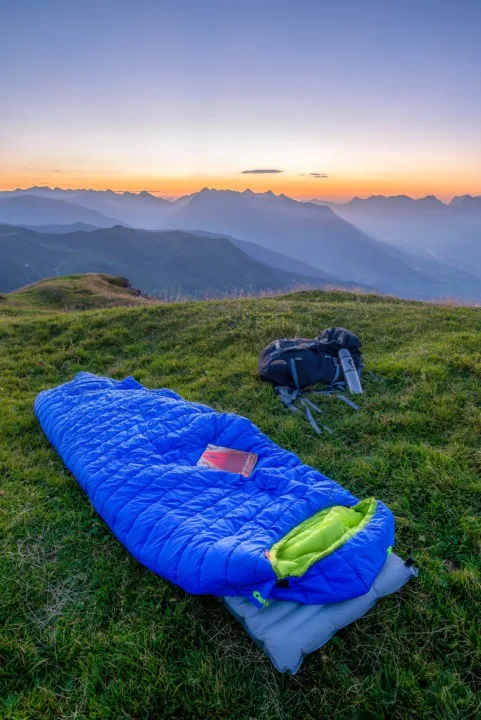
Hood:
To decide if you want a hood on your sleeping bag, there are a couple of factors to consider. If you are camping in cold climates (45°F or below) a hood is almost always the warmest option. However, if you are only camping in warm climates, a hood isn’t a necessity.
Some people will just wear a hat or sweatshirt hood in place of having a sleeping bag hood. Some side sleepers complain that the hood doesn’t turn with them, so their face is pointed at the side of the hood instead of out the hole. Though sometimes that can be nice in really cold weather to provide a little extra warmth for the nose and mouth.
Brand:
Brand can be important when choosing the right sleeping bag. Name brand companies have put a lot of research into their sleeping bags to make sure their ratings are correct and their customers are satisfied. That’s not to say, other brands aren’t good, but be sure to read the comments and do your research to make sure you’re getting good value.
Zipper:
Sleeping bags come with either a left or right zip opening. Some people might be picky with how their sleeping bag opens. Or if you and your significant other like to cuddle, you might want to get opposite zippers so yours can open up to each other. Also, sometimes if you have the same brand of a rectangular shape bag, your zippers can link up and you can make it a double wide.
Accessories For sleeping bags:
Liner:
A liner is basically a sheet for your sleeping bag. It can help keep your sleeping bag clean and keep you warmer at night. They range from fleece to silk depending on the weight and warmth that you are looking for.
Compression sack:
A compression sack is a good idea for backpackers when their sleeping bag volume is too big and need to cinch the stuff sack tighter.
Cleaner:
Nikwax down wash is designed to clean down fabric revitalize insulation and restore water-repellency. You don’t want to use regular detergent because it will break down the insulation and fabric and potentially ruin your sleeping bag.
Pillow:
For backpackers, you don’t want to waste room and weight on bringing a pillow, so one idea is to bring an insulated pillow to blow up to save space in you pack. It can also be a handy seat cushion around camp.
Our Sleeping Bag Recommendations
These are some of our top picks!!!
We will include some of our favorite options that are name brand, quality and hit many of the main categories.
But, for more price conscious buyers we will provide some good budget options.
Two brands for budget sleeping bags that stick out are “Outdoor Vitals” and “Hyke & Byke”. They both use a direct-to-consumer model that provides an unbeatable value, compared to name brand. But, keep in mind that cheaper alternatives will usually have less attention to detail so you may encounter quality issues.
If you read the reviews, you can usually find examples such as bad zipper design, sub-par water proofing, etc. But if you can save a couple hundred dollars, sometimes it’s worth putting up with minor design flaws.
Emily’s Top Pick For Sleeping Bag:

Marmot Ouray 0 Sleeping Bag – Women’s
The Marmot Ouray 0 Sleeping Bag is my favorite sleeping bag I have ever owned. Warmth is my #1 priority and this sleeping bag does not disappoint in that department. But I also didn’t want to completely sacrifice the other main categories to get my dream bag.
The Marmot Ouray 0 Degree weighs 3lbs 10oz and is filled with 650-fill-power duck down insulation. The major drawback is the compressed volume, which is 11.2L. When going on a backpacking trip, I used a stuff sak (listed above) to compress this sleeping bag to an even smaller size. This is a great option for a 4-season sleeping bag.
Jake’s Top Pick For Sleeping Bag:
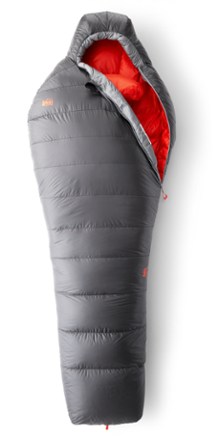
REI Co-op Magma 15 Sleeping Bag – Men’s
The REI Co-op Magma 15 Sleeping Bag is Jake’s favorite sleeping bag. This bag really doesn’t sacrifice much. It weighs 1lbs 12.2oz., compacts to 5.2L and can be comfortable in temperatures as low as the teens.
The REI Co-op Magma 15 has 850-fill-power goose down providing nice quality down. The one negative, is you can’t sleep comfortably much lower than the teens without getting cold making it not quite a 4-season sleeping bag. But it’s really a great option for a sleeping bag that can suit most categories comfortably.
Best Lightweight Sleeping Bags:
Best Lightweight Down Sleeping Bag: Marmot Trestles Elite Eco 30 Sleeping Bag
Best Lightweight Synthetic Sleeping Bag: Marmot Trestle Elite Eco 30
Best Budget-Friendly Lightweight Option: Outdoor Vitals Summit 0 Ultralight Sleeping Bag
Best Sleeping Bags For Low Temperatures:
Best 0 Degree Down Sleeping Bag: Marmot Never Summer Sleeping Bag
Best 0 Degree Synthetic Sleeping Bag: Marmot Trestles Elite Eco 0 Sleeping Bag
Best 0 Degree Budget-Friendly Sleeping Bag: Coleman 0°F Mummy Sleeping Bag | North Rim Cold-Weather Sleeping Bag
Best Comfortable Sleeping Bags:
Best Comfortable Down Sleeping Bag: Kelty Galactic 30 Sleeping Bag
Best Synthetic Comfortable Sleeping Bag: The North Face Dolomite One Sleeping Bag
Best Budget-Friendly Comfortable Sleeping Bag: MalloMe Camping Sleeping Bag – 3 Season Warm & Cool Weather
Also, be sure to check out some quality camping gear under $20.
Most Multi-Functional Sleeping Bag:
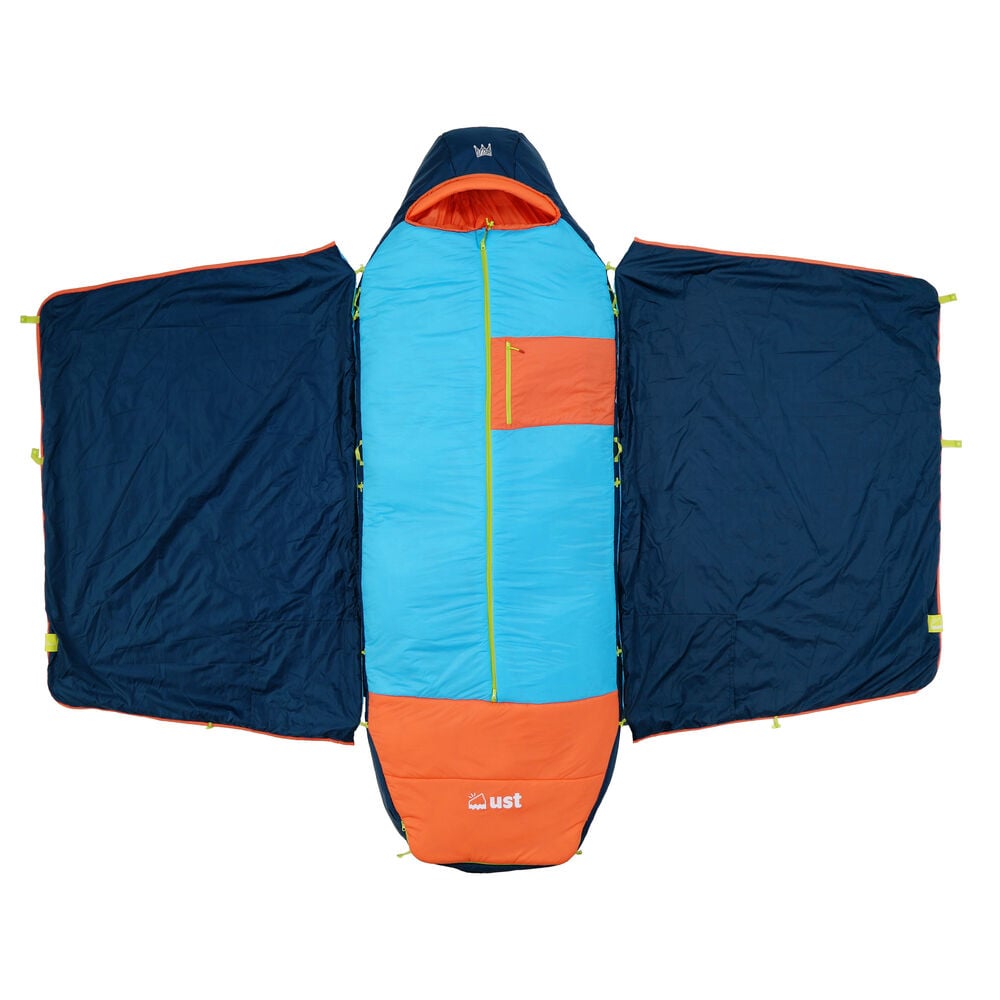
This synthetic fill Monarch Sleeping Bag ranges from 37 degrees to 17 degrees. It weighs 3lbs 8oz and compresses to 13in. x 8.5in. when stowed away.
Takeaway For How To Choose A Sleeping Bag:
Jake and I agree that a sleeping bag is our most important piece of camping gear. But, choosing a sleeping bag that’s perfect for all situations can be tough. You need to really identify the conditions that you will be using it in most often.
Then you can find a bag that meets your criteria and fits in your budget. From my experience, if you will be camping a lot, down is the way to go! I have had synthetic and down, and I can’t rave enough about my down sleeping bag.
Now that you found a sleeping bag, it’s time to pair it with a sleeping pad and a quality tent.

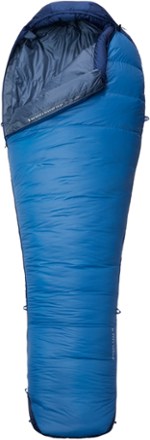
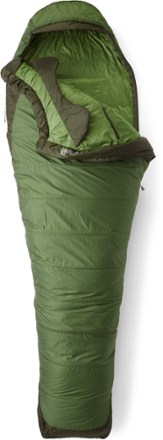
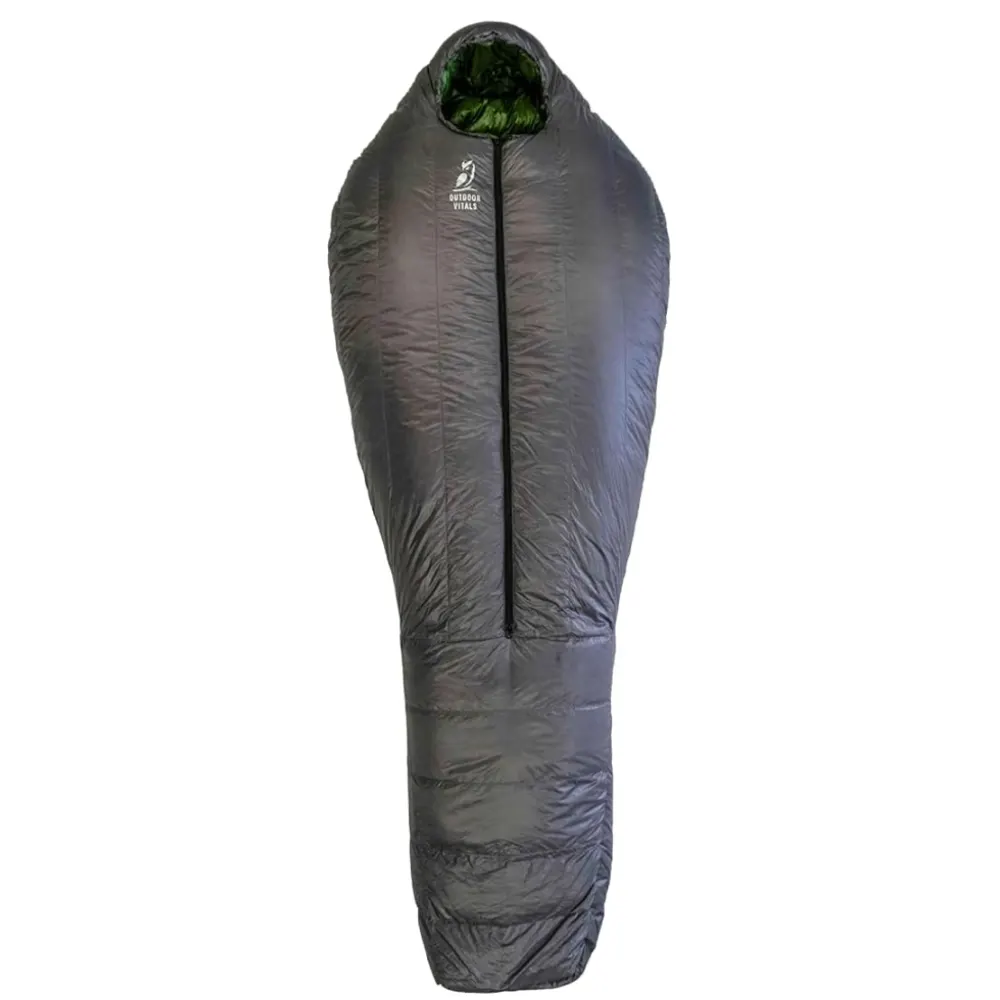
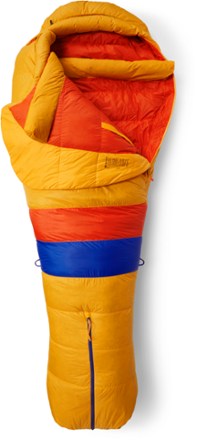
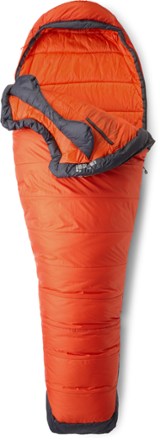
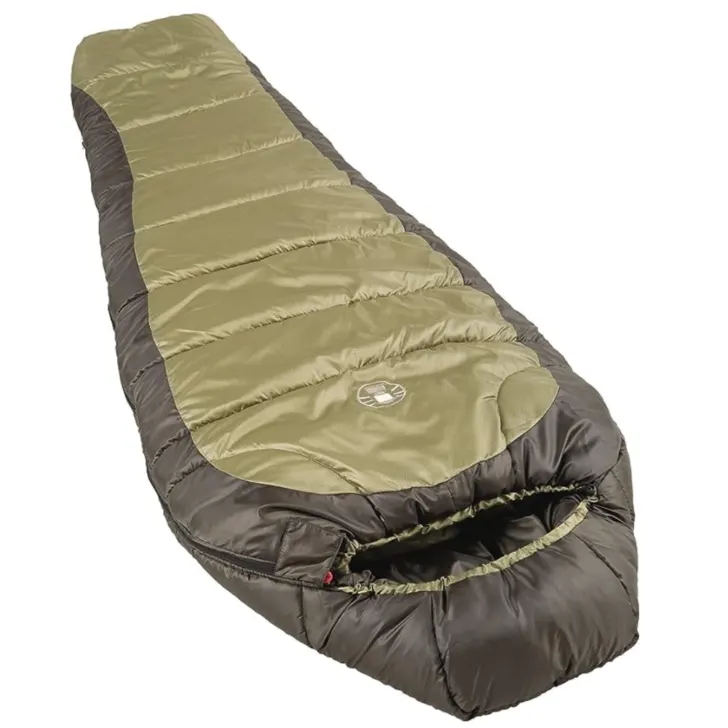
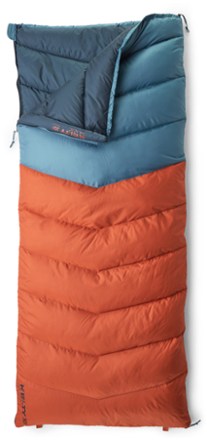
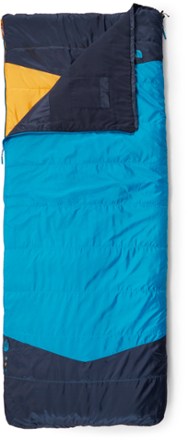
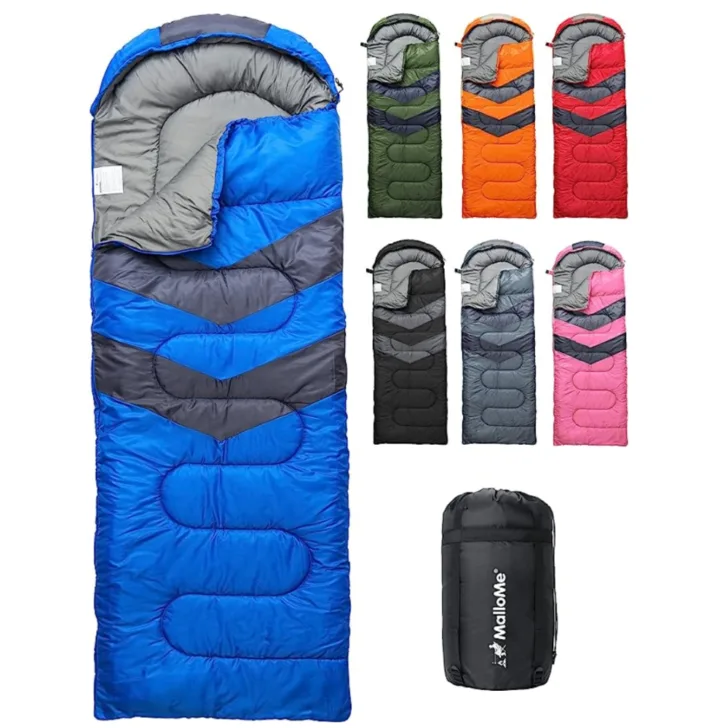
The Beginner's Guide To Backpacking - tworoamingsouls
Tuesday 4th of April 2023
[…] How To Choose The Right Sleeping Bag […]
Best Camping Tents On The Market in 2023 - tworoamingsouls
Tuesday 4th of April 2023
[…] that you found the best camping tent on the market, be sure to pick up a warm sleeping bag and comfortable sleeping pad. There are some amazing websites where campers can find great […]
Ultimate Camping Checklist | Car Camping Essentials - tworoamingsouls
Saturday 11th of June 2022
[…] Posts {Best Tents On The Market, How To Choose The Right Sleeping Bag, Ultimate Guide For How To Choose The Right Sleeping […]
Tips For Sleeping Better On A Camping Trip - tworoamingsouls
Saturday 10th of April 2021
[…] How To Choose The Right Sleeping Bag […]
How To Choose The Right Sleeping Pad | Ultimate Guide - tworoamingsouls
Friday 26th of March 2021
[…] Check out our post: How To Choose The Right Sleeping Bag […]